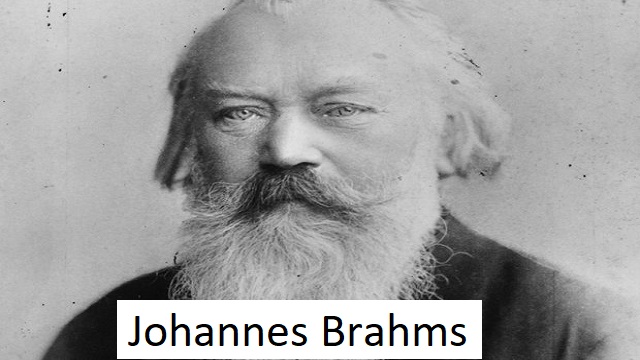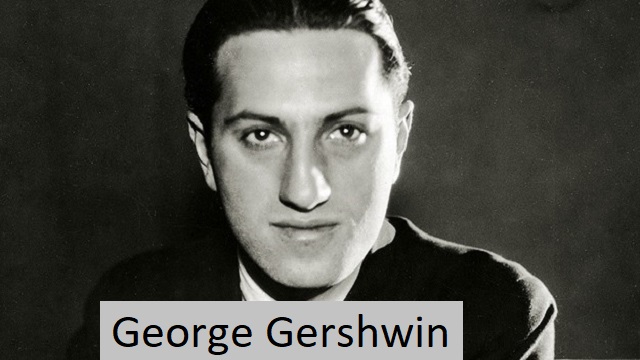Johannes Brahms (born May 7, 1833 Hamburg [Germany] – died April 3, 1897 Vienna, Austria-Hungary [now Austria]), German Romantic who wrote symphonies and concertos, chamber music composer, and pianist. , piano works, choral pieces and more than 200 pieces. Brahms was a master of the symphony and sonata style in the late nineteenth century. He can be seen as a protégé of the classical tradition of Joseph Haydn, Wolfgang Amadeus Mozart and Ludwig van Beethoven at a time when the standards of that tradition were being challenged or overthrown by the Romantics.

Youth Pianist and Music Director
As the son of Jakob Brahms, a penniless horn player and double bass player, Johannes showed promise as a pianist at an early age. He first studied music with his father and, at the age of seven, was sent to take piano lessons with F.W. Cossel, who three years later passed it on to his teacher Eduard Marksen. Between the ages of 14 and 16, Brahms earned money to support his family by playing rudimentary inns in Hamburg’s shipbuilding district, while at the same time composing and sometimes conducting recitals. In 1850 he met the Jewish-Hungarian violinist Eduard Lemenyi and gave a concert with him, where he learned Roman music. His influence has always stuck in his mind.
His first breakthrough came in 1853 when he met the violin virtuoso Josef Joachim. He immediately recognized Brahms’s talent. Joachim in turn recommended Brahms to the composer Robert Schumann, and an instant friendship struck up between the two composers. In his periodical Neue Zeitschrift für Musik, Schumann writes passionately about Brahms and admires his work. The article caused a stir. From then on, Brahms gained momentum in the music world, but there was always some factor that made things difficult for him. The protagonist of such success was Schumann himself. There was already a struggle between the “New German” school, dominated by Franz Liszt and Richard Wagner, and the more conservative elements of which Schumann was a leading spokesman. The latter’s praise of Brahms displeases the former, and Brahms himself, although well received by Liszt, does not hide his lack of sympathy for self-confident modernists. He was therefore drawn into controversy, and much of the disruption to his otherwise uneventful personal life stems from this situation. Gradually, Brahms developed a close relationship with the Schumann family, and when Schumann first suffered from mental illness in 1854, Brahms helped Clara Schumann manage her household. It appear he fell in love with her. But, although they remained close friends after Schumann’s death in 1856, their relationship apparently did not progress further. Brahms’s closest marriage was to Agatha von Siebold in 1858. He suddenly withdrew and did not seriously engage in prospecting. The reasons for this are obscure, but his great restraint and inability to express his feelings apart from music were probably responsible, and he had no doubt that his natural anger and sympathetic indignation made him an impossible husband. In his letter he wrote: All of this, coupled with his intense love for children and animals, partly explains some aspect of his music: his focused inner reserve that hides and sometimes blocks powerful emotional streams. I’m here.
From 1857 to 1860 Brahms taught piano and led the choir at the Detmold court, and in 1859 was appointed director of the Hamburg Women’s Choir. Such a position provided him with valuable practical experience and left him plenty of time to do his job. At this point Brahms’ productivity increased and, in addition to two delightful orchestral serenades and a flamboyant String Suite in B flat major (1858–1860), he composed the restless Piano Concerto No. 1 in A minor (1854–1858). In 1861 he was back in Hamburg, and the following year he made his first visit to Vienna with some success. After failing to get the post of conductor of the Hamburg Philharmonic, he moved to Vienna in 1863 and took command of the Singakademie, a fine choral society. His life there was generally uneventful, marked only by the vagaries of his musical success, by the whims and intense rivalry between his patrons and Wagner and Anton Bruckner, and by an unrequited romance. Despite some failures and constant attacks from Wagnerians, his music established itself and his reputation steadily increased. In 1872, he was conductor of the Society of Friends of Music (Gesellschaft der Musikfreunde) and conducted the Vienna Philharmonic Orchestra for three seasons. The choice of his music was not as careful as might have been expected, and “Varamon” continued to fight Wagner, but Brahms himself still spoke of his rival with respect. Brahms is sometimes described as unsympathetic to his contemporaries. His kindness to Antonín Dvořák is still recognized, but his encouragement, even from a composer like the young Gustav Mahler, is not always realized, and his enthusiasm for Carl Nielsen’s First Symphony is not widely known.
Between these two meetings in Vienna, Brahms’ career flourished and some of his most important works were composed. 1868 saw the completion of his most famous choral work, Ein deutsches Requiem (A German Requiem), which has occupied Schumann since his death. The work, based on biblical texts chosen by the composer, had a profound impact on its first performance in Bremen on Good Friday 1868; Later it was screened all over Germany. With the Requiem, which is still considered one of the most important works of 19th century choral music, Brahms entered the forefront of German composers. Brahms also wrote successful works. In 1869 he published two volumes of Hungarian Dances for piano duo. These were brilliant arrangements of Roman pieces that he had collected over the years. Their success was phenomenal and they were performed all over the world. In 1868/69 he composed his Valses Liebeslieder for vocal quartet and four piano accompaniments. A brilliant work with humor and beautiful Viennese dance songs. Some of his best songs were also written around this time.
The Maturity and Fame of Johannes Brahms
By the 1870s Brahms was writing major works of chamber music and deliberately embarking on the path of purely orchestral composition. In 1873 he produced an excellent orchestral version of Haydn’s Variations on a Theme. After this experiment, which even the self-critical Brahms must have considered a complete success, he felt ready to complete his Symphony No. 1 in C minor. This magnificent work was completed in 1876 and heard for the first time that same year. After proving that he had a perfect command of the symphonic idiom, the composer produced his Symphony No. 2 in D major (1877) the following year. It is a calm and idyllic work that avoids the heroic pathos of the first symphony. Six years had passed since his Symphony No. 3 in F major (1883). In the first three movements, the piece also seems to be a relatively calm and relaxed composition. At the end, it shows a massive clash of elemental forces. Within just a year, Brahms’ last Symphony No. 4 in E minor (1884–85) resumed. This work may have been inspired by the ancient Greek tragedies of Sophocles that Brahms was reading at the time. The most important part of the symphony is the finale. Brahms the simple subject in c. Bach’s Cantata No. 150 is a set of 30 highly complex variations, but the technical skills here pale in comparison to the clarity of thought and intense emotion.
Gradually, Brahms’ fame spread beyond Germany and Austria. Switzerland and the Netherlands developed a genuine appreciation for his art, and Brahms’ concert tours in these countries, as well as Hungary and Poland, were widely acclaimed. The University of Breslau (now the University of Wroclaw, Poland) awarded him an honorary doctorate in 1879. The composer thanked the university by writing Akademische Festauvert (1881) based on various German student songs. Other orchestral works from this period include the Violin Concerto in A major (1878) and the Piano Concerto No. 2.2 in B flat major (1881). Brahms’ contemporaries were well aware of the extraordinary importance of his work, and similar prominence was accorded to the so-called “Big Three” (i.e. Bach, Beethoven and Brahms). However, there was a considerable circle of musicians who did not recognize Brahms’ greatness. Ardent admirers of the avant-garde composers of the time, especially Liszt and Wagner, felt that Brahms’ contributions were too archaic and expressionless.
Brahms lived in Vienna for the rest of his life. After resigning as director of the Society of Friends of Music in 1875, he devoted much of his life to composition. When he went on a concert tour, he only conducted or played (on the piano) his own works. He maintained many close personal friendships and remained celibate throughout his life. His summers were spent traveling in Italy, Switzerland and Austria. During this period Brahms composed the Double Concerto for Violin and Cello in A Minor (1887), the powerful Piano Trio No. 3 in C Minor (1886), and the Violin Sonata in D Minor (1886–1888). He also completed the String Quintet in F Major (1882) and the Vibrant String Quintet in G Major (1890).
Last Year
In 1891, Brahms got the idea to write chamber music for the clarinet after meeting the brilliant clarinetist Richard Mühlfeld, whom he had heard playing a few months earlier. With Mühlfeld in mind, Brahms wrote the Trio for clarinet, cello and piano (1891). Great Quintet for Clarinet and Strings (1891). Two Sonatas (1894) for clarinet and piano. These works are perfectly structured and perfectly adapted to the possibilities of the wind instrument.
In 1896 Brahms completed his Vier ernste Gesänge (Four serious songs) for bass voice and piano on texts from the Hebrew Bible and the New Testament, a pessimistic work that confronts the vanity of all earthly things and hails death as the healer of pain and pain Fatigue. The idea for this work arose from Brahms’ thoughts about Clara Schumann, whose health had deteriorated greatly. Clara died on May 20, 1896, and soon after Brahms forced himself into treatment, it was discovered that his liver was seriously ill. He appeared in concert for the last time in March 1897 and died of cancer in Vienna in April 1897.
Johannes Brahms Aims And Achievements
Brahms’ music complemented and counteracted the rapid growth of romantic individualism in the second half of the 19th century. He was a traditionalist in that he greatly admired the subtlety and power of the movement of Haydn, Mozart and Beethoven, with the further influence of Franz Schubert. Romantic composers’ preoccupation with emotional moments created new harmonic approaches, but it had two inevitable consequences. First, it created a tendency toward rhapsody that often resulted in a lack of structure. Second, it had slowed down the processes of music, allowing Wagner to discover a style of musical writing that moved as slowly as his often polemical stage action. Many composers therefore cared less and less about preserving the capacity for tight, brilliant and dramatic symphonic development that the masters at the turn of the eighteenth century Brahms, well aware of this loss, rejected it and made up for it to keep alive a force he felt was far from exhausted. But Brahms did not want to reproduce old styles, he wanted to give the language of his time a constructive force. Thus, his musical language bears little resemblance to that of Beethoven or even Schubert. Harmonically, he was heavily influenced by Schumann and to some extent by Wagner. What sets Brahms apart from all his contemporaries is Brahms’ flexible and deft mastery of rhythm and movement. It is often thought that his sense of movement was slower than that of his most admired predecessor, Beethoven, but Brahms was always able to change the tempo of his musical thought in surprising ways, often making it rigid and irreversible. The mastery of tonality, harmony and rhythm is a matter of subtlety, and no other 19th-century composer after Beethoven could surpass him. Throughout Brahms’s career, you’ll find many different types of expression—from subtle humor to tragedy—but his larger works show an increasing mastery of movement and greater economy and focus. Finally, Brahms’ driving force comes partly from a source that may seem contradictory. He was the greatest connoisseur of classical composers in the music of the distant past and took the lessons of the polyphonic school of the sixteenth century and applied them to the instrumental and vocal forms and resources of his time. Thus, through a new approach to texture, derived from much older models, he revives the rhythmic language of the 19th century, which threatened to become exhausted in texture and harmonic stagnation. In his orchestral works, especially in his use of woodwind and brass instruments and in his compositions for stringed instruments, Brahms undoubtedly exhibits very characteristic developments of tone, but most importantly, color is imposed upon itself and rather develops. . Attention. A close relationship between orchestration and architecture dominates this work, and orchestration contributes as much to the coloration of the tone as to harmony and tonality and the changing nature of the theme. As in the concertos of Mozart and Beethoven, this attitude towards the orchestra proved in Brahms a unique acceptance of the more nuanced aspects of the relationship between orchestra and soloist. The Classical Concerto achieved a composition unprecedented in Mozart’s mature works for piano and orchestra, and Beethoven increased the scope and expressiveness of its stylistic design. The great delicacy of such works did not escape many later authors. Felix Mendelssohn did the orchestra’s opening tutti, or ritornello, and was followed in this respect by many other minor composers. They set out to restore the depth and grandeur of an idea Like Mozart and Beethoven, he understood that a long orchestral introduction, far from being superfluous, was a way to condense and deepen the complex relationship of the orchestra with the soloist, especially when it came to rewriting, where there is a piece that it is completely new and often it is new. A revealing distribution of themes, keys, devices and tensions was possible. Many of Brahms’ contemporaries regarded him as a reactionary in this regard, but the result is that Brahms’ concertos have stood the wear and tear far better than many works of his time thought they were superior.






